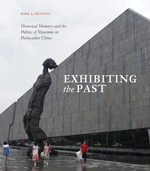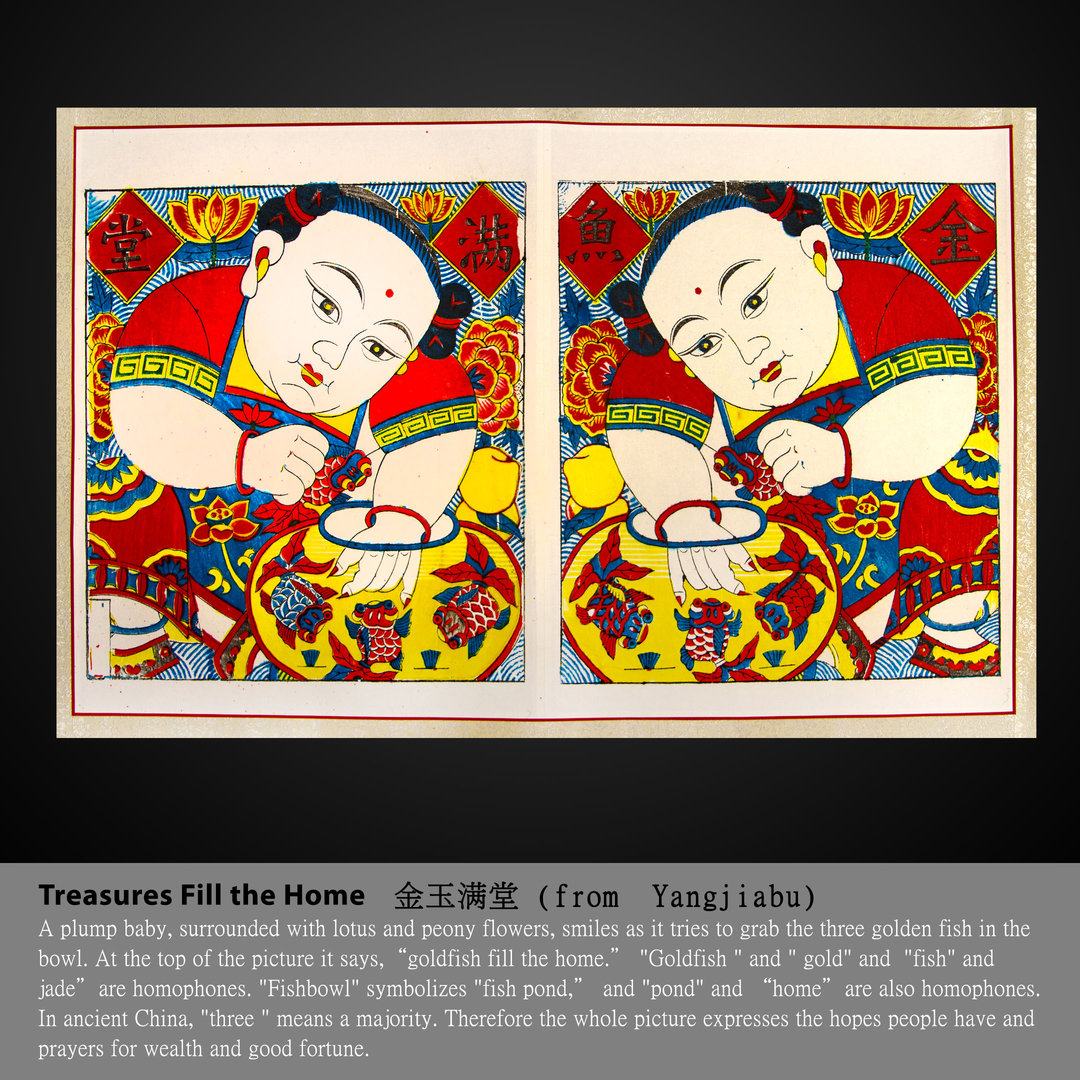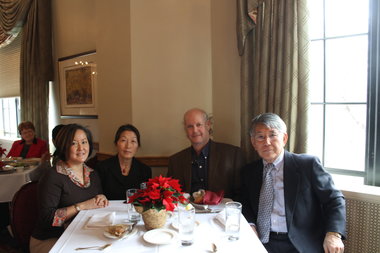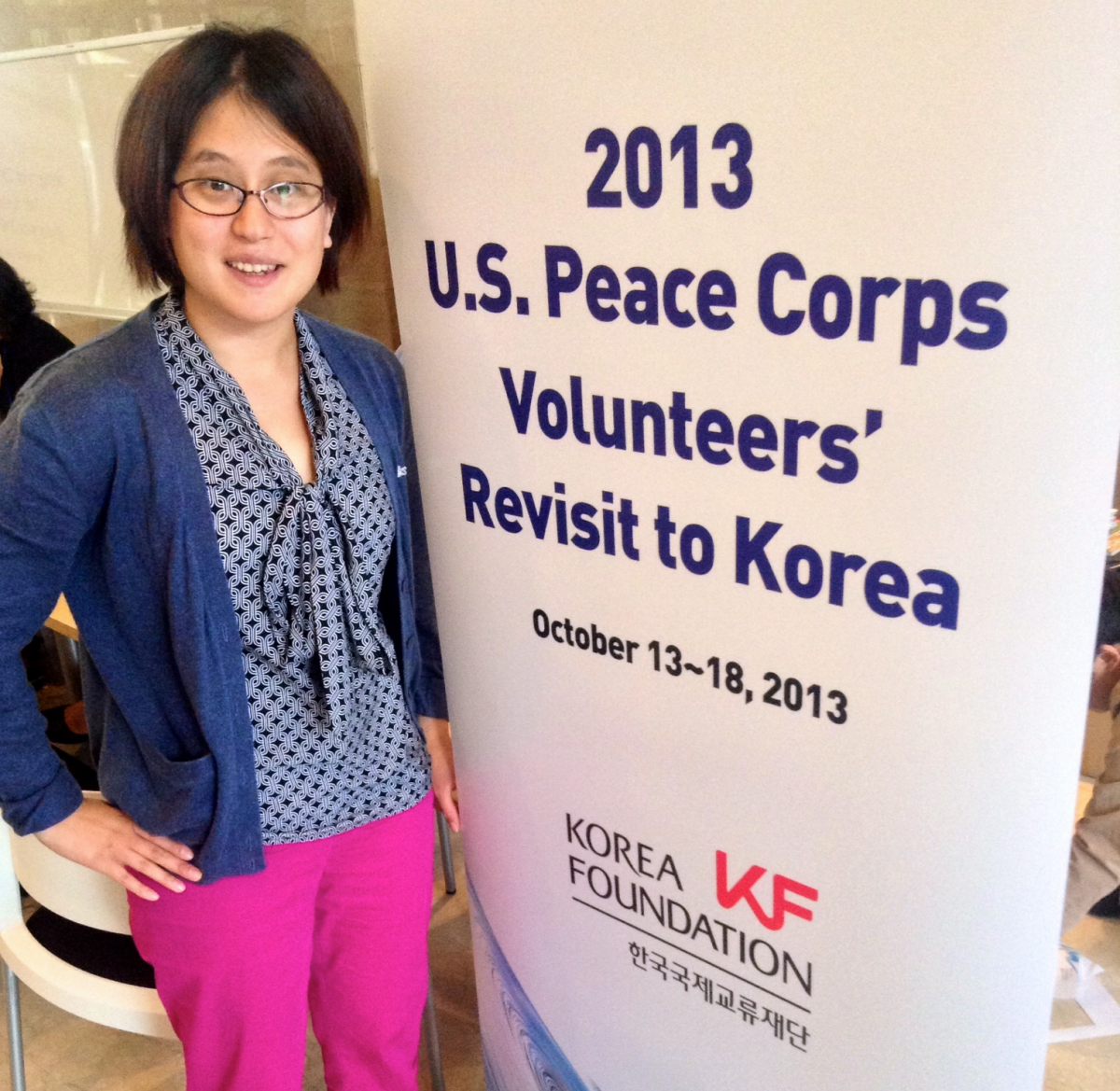Professor Denton publishes new book on museums
 Kirk Denton, professor of Chinese in DEALL, has a new book recently published by the University of Hawaii Press. The work is entitled "Exhibiting the Past: Historical Memory and the Politics of Museums in Postsocialist China." Read the full description from the publisher's website.
Kirk Denton, professor of Chinese in DEALL, has a new book recently published by the University of Hawaii Press. The work is entitled "Exhibiting the Past: Historical Memory and the Politics of Museums in Postsocialist China." Read the full description from the publisher's website.
Chinese New Year Paintings on Display in Hagerty Foyer

New Year Paintings (nian hua) are the most popular folk art used during the traditional Chinese Spring Festival (Chun jie), which takes place on the first day of the first month of the Lunar Calendar and lasts until mid-month, culminating in the Lantern Festival (Yuanxiao jie). During the Lunar New Year, every household will buy a few paintings. From the front door to private rooms, all are covered with these symbols of wealth and good fortune so as to create a warm, festive, and joyous atmosphere.
Ancient China was an agricultural country. From the time of the harvests and into the New Year, people wished to express their thanks to ancestors and gods in order to receive their blessings. Everyone hopes to lead a happy life of peace and prosperity. In the past, disasters and shortages were attributed to demons and ghosts. New Year Painting was one sort of protection against these negative forces. The earliest such paintings are of “door gods” (men shen) named Shen Tu and Yu Lei (figures in from early Chinese myths) whose pictures were placed on front doors to protect the home. Thereafter, numerous other motifs were developed over time.
As a form of visual folk art, the paintings have developed under the influences of many generations and locales. Besides their ritual purpose, the paintings also function as artistic decorations during the Spring Festival. The themes reflected in the paintings are extremely broad, covering human activity, landscapes, flowers and birds, ancient historical stories, myths and legends, fiction, drama, children, and the all-encompassing realities of life. Once placed on the doors and walls of the home, the paintings remain in place until the arrival of the next New Year.
The New Year Paintings in this exhibit come from important centers of production of the folk paintings in northern China. Some were made in the village of Yangjiabu, Weifang city, Shandong province, and others are from the village of Zhuxianzhen, Kaifeng city, Henan province. Other important centers of New Year painting production are Yangliuqing near the city of Tianjin, and the Taohuawu region in Jiangsu province, China.
All information in the exhibit was collected by Dr. Ji Jun of the Anyang Normal University, Henan Province, People’s Republic of China. Dr. Ji is presently a visiting scholar at OSU, invited by the OSU Center for Folklore Studies and the Department of East Asian Languages and Literatures).
“Chinese folk art paintings is a unique art system is Chinese folk precious intangible cultural relics. To some extent, the history of life, beliefs and customs of Chinese society among all concentrated in a small New Year painting.” (Exhibit coordinator, Dr. Ji Jun.)
Dr. Mark Bender of DEALL and Dr. Abhijit Varde of the Hagerty Multi-media Lab aided in producing the exhibit.
[Chinese Text]
年画是中国年节中最流行的民俗美术形式。每逢农历新年,家家户户都会买几张年画,从大门到厅房,都贴满了这些象征着吉祥富贵的年画,营造出一种欢乐热烈的节日气氛。
中国在古代是一个农业国家。在农业收成以后、新年来临之前,人们都要祭祖酬神,感谢祖先和神灵的庇佑和恩泽。他们希冀生活平安美满,而早期人们总是认为灾难来自于妖魔鬼魅,希望借助巫术的手段来予以驱除,所以古代的新年活动中充满了驱邪纳福的内容。目前所发现的最早的门神像神荼郁垒就具有浓重的驱邪意味,而年画也由此发展起来。同时,门神也成为中国年画中最重要的品种。年画是中国年节中最流行的民俗美术形式。
年画根植于民间,装饰于节日,在长期的发展过程中适应群众的审美爱好和需要,成长为一种独具特色的画种。它对于丰富人们的精神生活,反映人们的美好愿望,美化人们的节日环境起着重要的作用。年画反映的题材极为广泛,举凡人物、山水、花鸟、古代历史故事、神话传说、小说戏曲、婴孩及现实生活等几乎无所不包。年画也以其活泼生动的艺术形式、强烈明快的色调和富有情趣的情节以及生动的艺术形象而更具欣赏性、娱乐性和装饰性。
本次展出的木版年画以山东潍坊杨家埠年画和河南开封的朱仙镇木版年画为主,它们与天津杨柳青、苏州桃花坞并称中国四大年画产地。所有的资料搜集来自于纪军博士(河南安阳师范学院,俄亥俄州立大学民俗研究中心与东亚语言文学系的访问学者)。Mark Bender教授参与策划并全程指导。
感言:
年画是中国民间艺术中的一个独特的艺术体系、是中国民间珍贵的非物质文化遗存。某种程度上,中国社会的历史、生活、信仰和风俗全都浓缩在小小的年画之中。
Chris Lee Korean Performance Research Fund established
 Dr. Chris Lee of Columbus Ohio has donated a generous gift for the establishment of a fund for the creation of an OSU Korean Performance Program in DEALL. Dr. Lee studied medicine at Yonsei University Medical College in Seoul Korea and pursued his career as a Radiologist at Grant Medical Center, Columbus Ohio from 1970 to 2004, then at Ohio State University School of Medicine from 2004 to 2013. Dr. Lee has a profound interest in both traditional and contemporary performance traditions in Korea and Korean communities abroad. Inspired by DEALL Prof. Chan Park’s work in promoting Korean culture through research and practice of Korean traditional performance, Dr. Lee has donated funds that will contribute specifically to the building of a program for teaching and staging of Korean cultural performances, interdisciplinary/transnational research, and scholarly exchanges. As a token of appreciation for his gift, on December 4, 2013, Prof. Mark Bender (DEALL Chair) invite
Dr. Chris Lee of Columbus Ohio has donated a generous gift for the establishment of a fund for the creation of an OSU Korean Performance Program in DEALL. Dr. Lee studied medicine at Yonsei University Medical College in Seoul Korea and pursued his career as a Radiologist at Grant Medical Center, Columbus Ohio from 1970 to 2004, then at Ohio State University School of Medicine from 2004 to 2013. Dr. Lee has a profound interest in both traditional and contemporary performance traditions in Korea and Korean communities abroad. Inspired by DEALL Prof. Chan Park’s work in promoting Korean culture through research and practice of Korean traditional performance, Dr. Lee has donated funds that will contribute specifically to the building of a program for teaching and staging of Korean cultural performances, interdisciplinary/transnational research, and scholarly exchanges. As a token of appreciation for his gift, on December 4, 2013, Prof. Mark Bender (DEALL Chair) invite d Dr. Lee for lunch at the OSU Faculty Club, accompanied by Prof. Chan Park and Prof. Etsuyo Yuasa (Chair of OSU East Asian Study Center). Korean cultural performances, both traditional and contemporary, have been garnering worldwide attention in recent years along with the Korean Wave. Samulnori folk music and drumming, Pansori style storytelling, the Wonder Girls, and PSY reflect the exciting range of Korean performance.
d Dr. Lee for lunch at the OSU Faculty Club, accompanied by Prof. Chan Park and Prof. Etsuyo Yuasa (Chair of OSU East Asian Study Center). Korean cultural performances, both traditional and contemporary, have been garnering worldwide attention in recent years along with the Korean Wave. Samulnori folk music and drumming, Pansori style storytelling, the Wonder Girls, and PSY reflect the exciting range of Korean performance.
DEALL Story
Kristin Krzic is a 2013 OSU grad and member of the International Affairs Scholars Program and Mortar Board Honor Society. She interned at the Institute of International Education promoting Fulbright programs. Majoring in International Studies and Korean, she was awarded the 2012 DEALL Korean Studies Award. Presently, she works in International Admissions at OSU. Sponsored by the Korea FoundationShe had a visit to South Korea in October 2013.Read her story below, or download the story with lots of pictures.:
"Most Americans are familiar with the Republic of Korea through either K-pop music, the North-South political issues or the spicy, delicious cuisine. But for me, my awareness and interest grew through Korea’s association with the U.S. Peace Corps. My dad, a Returned Peace Corps Volunteer (RPCV), served in Korea in the late 1970’s and I grew up looking at pictures of Korea from that time period. 
This past October, I had the honor to continue learning about life on the peninsula through a RPCV Revisit Program to Korea sponsored by the Korea Foundation. From October 13 to October 18, fifty-five RPCVs and family members were hosted by the Foundation to reconnect with life in Korea. It was an unforgettable visit that allowed me to see different generations of Koreans and Americans sharing memories and new experiences together.
Peace Corps was in Korea from 1966 to 1981 and many of the RPCVs had not been back to Korea since that time. In fact, a few of the Revisit members were in the first group of Volunteers who came to Korea in 1966! At that time Korea’s Per Capita Gross National Income (GNI) was about $254; by 2010 it was about $21,000. The RPCVs marveled at the changes that had occurred in Korea since their time of service.
The highlights of the week were receptions hosted by the Ministry of Foreign Affairs and Trade (MOFAT), visits to the Korea International Cooperation Agency (KOICA) – Korea’s version of Peace Corps, overnight site visits to the RPCVs’ former schools and health clinics, oral interviews of the RPCVs at the National Museum of Korean Contemporary History, and an afternoon visit to the Korean National Assembly hosted by Speaker H.E. Kang Chang-Hee.
I enjoyed all of the activities. At KOICA, I had the opportunity to speak in front of the RPCVs and KOICA volunteers to describe know how my dad’s time in the Peace Corps has influenced my career decisions, especially my current job now working in International Admissions at OSU. I gave the speech in Korean, and although I was nervous at first, the warm welcome by the audience quickly made me feel relaxed. From my visit there, I learned that KOICA is modeled after the U.S. Peace Corps. The Korean government recognized how the assistance from the Peace Corps helped Koreans during a difficult time in their history and now was reciprocating by sending their volunteers to other countries. Many of the KOICA volunteers I talked to were getting ready to go to countries in South America and South Asia.
Each of the RPCVs had the opportunity to re-visit the schools or health clinics where they had served. These re-visits were the perfect opportunity for the volunteers to reconnect with their past students and colleagues. It was a walk down memory lane for the Americans and the Koreans. Many of the volunteers tried to find memorable spots in their former cities. My dad tried to find the boarding house where he used to lived as well as the old roads where he would walk to the school. He took pictures during this trip and matched them with his old photographs taken at the same location. The change was incredible. Instead of the old mud roads and low buildings, there are now concrete roads and tall skyscrapers. It is amazing to see how Korea has become a modern, advanced country in such a short period of time.
At the National Museum of Korean Contemporary History, I was able to participate in a ceremony celebrating the Memorandum of Understanding between the Museum and the Friends of Korea (FOK), the organization that the RPCVs have now formed. In this agreement, the FOK members will donate items to the Museum and work to collaborate on future conferences and presentations. The Museum staff also interviewed each RPCV about their time in Korea. These taped oral interviews will be a part of the Museum’s oral history collection.
During the revisit, I was able to meet one Ohio State University Alumnus – Russ Dynes. He had served as a tuberculosis control worker in a rural public health center in Cholla Buk Do from July 1972 to July 1974. His revisit trip to Korea this year was a great experience. He told me that during his revisit to his clinic he found that the personnel and facilities had changed. The clinic was now in a beautiful new facility. He also said that the staff welcomed him like a “lost son who had returned home.” Listening to him talk about his time in the Peace Corps in Korea, it was clear that it had a dramatic impact on his life. After Peace Corps, he continued working in health and human services and recently retired from the State of Delaware’s Division of Public Health.
By participating in this revisit, it was evident to me that the Koreans and Americans who came into contact through the Peace Corps shared warm feelings and appreciation for each other. The Korea Foundation went to extraordinary lengths to show their appreciation. The receptions not only allowed the RPCVs to meet old friends and colleagues but also to meet influential national figures such as National Assembly Speaker Kang, Deputy Minister of Foreign Affairs, Lee Kyung-Soo, and Kathleen Stephens, former U.S. Ambassador to Korea. Many of the Korean hosts had been taught by Peace Corps Volunteers during the 1960s and 1970s. Ambassador Stephens had been a Volunteer in Korea in the 1970s.
It was touching to see the RPCVs and their Korean colleagues shed tears of happiness when they brought up past memories and met each other after so many years had passed. To me, it showed the strong and deep influence that Peace Corps had on people from both countries. The RPCVs through their organization “Friends of Korea,” plan to continue their association with Korea through initiatives such as the Museum Project. Since it is no longer possible for me to go to Korea as a PCV, I did the next best thing -- I became a member of Friends of Korea! If anyone wants to learn more about the revisit, I suggest going to the Friends of Korea website at friendsofkorea.net. You will be able to understand the warmth of the relationship between Korea and America that was established by the Peace Corps."
